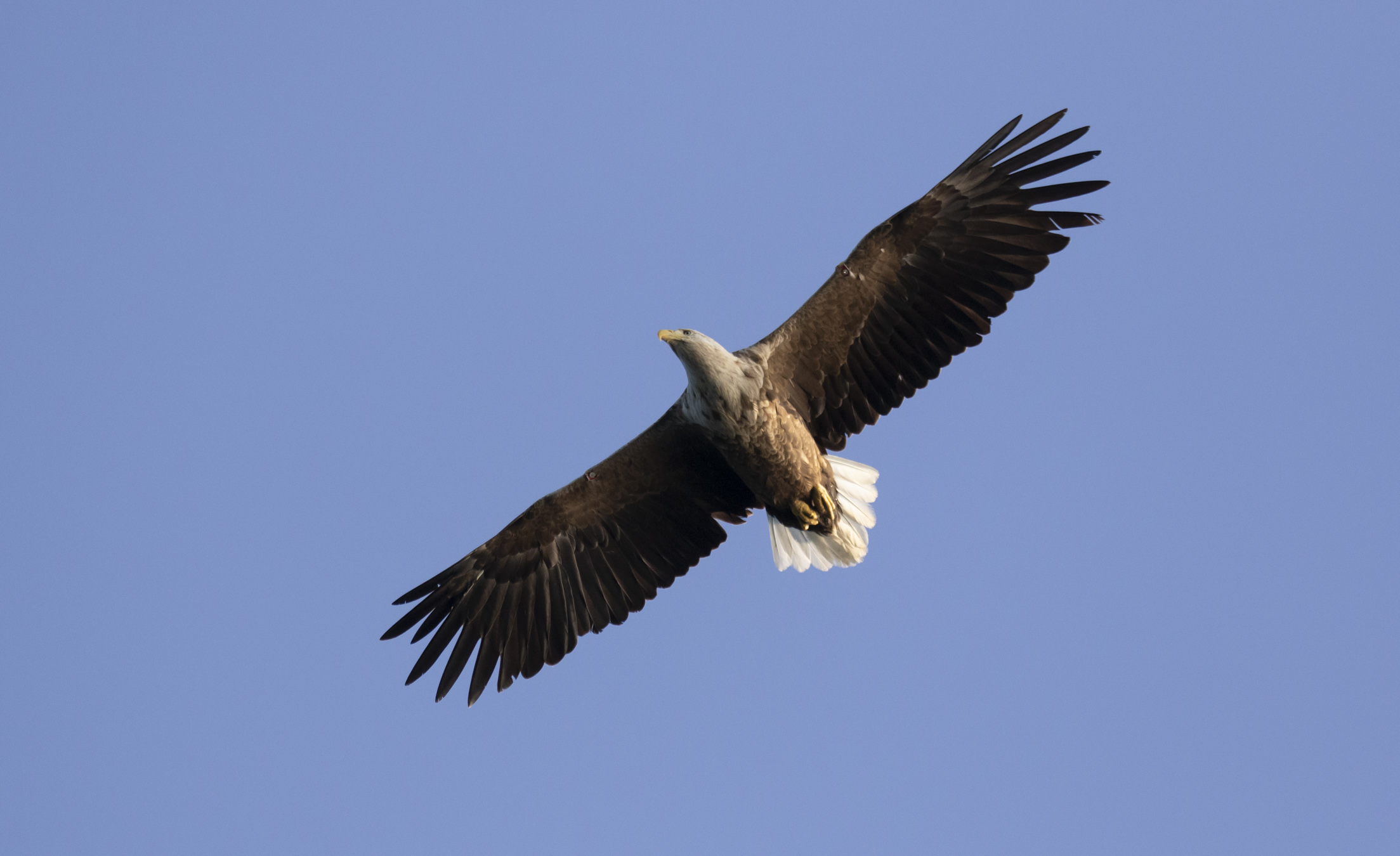
We drifted silently on blue water under a blue sky. The amazing rock formations of the Macleod’s Maidens towered above us, visibility was perfect. The sea was as flat as glass and equally reflective. I turned around asked our boatman, Jordan, how often are conditions like this? He simply said “never”.
Jordan was right. Typically Skye has rubbish summer weather. The 30-year average for the number of days with complete sunshine in July is 0.9 days per month – ie not even one full day of sun, on average, in the whole month! In fact, July and August have the least number of days of full sunshine of any month, except December, which is pretty much dark, being so far north. We got so lucky.
We arrived in a heatwave that lasted throughout the entire first week of our ten days on the island. A week of blue skies, sunshine and crystal-clear visibility. We hardly saw a cloud in the first week, or indeed, a wave. Even at the end of our trip when there was more cloud cover, the wind remained absent and the sea completely flat. Below, the view from above Uig, looking out towards the Ascrib Islands, across a wave-less sea:

Looking west to the Outer Hebrides, across the Little Minch, the sea between Skye and the Hebrides:

Having suffered many times on boats at sea (most graphically recorded here), a flat sea is my idea of heaven. We took three boat trips in these ideal conditions: one east from Portree; one west from Carbost and one in the north from Uig to the Ascrib Islands.

Our first trip was from Portree, a 6pm departure on The Stardust. This is a well-known trip for seeing and photographing White-tailed Eagles. The local eagles are habituated to taking fish thrown from the back of the boat. We did not come across any eagles on the cliffs closest to Portree, so then headed across the sound to Raasay. As soon as we approached the island, a large and distinctive shape appeared in the sky heading towards us:

This was, apparently, a 14-year-old female White-tailed Eagle, who is feeding a large chick on the island. She circled a couple of times…

… before making a low-level pass (harrassed by the local Oystercatchers), to take the fish from the sea:



We also came across a small pod of Common Dolphins in the Sound of Raasay, including this adult and calf:

There were more cetaceans on our second boat trip, on a RIB with SeaSkye Tours, from Carbost on western Skye. We exited Loch Harport, passed the Macleod’s Maidens (see above) and entered the open ocean, which was completely flat and blue. It could have been the Mediterranean. Splashes in the distance indicated that a large pod of Common Dolphins were actively feeding offshore. As we approached, the dolphins became interested in our boat:

With the sea so still, the closer dolphins were clearly visible underwater. Their skin tells their story: tooth rake marks, from interactions with other dolphin’s teeth, are common in cetaceans, many can be seen on this Common Dolphin:

The feeding dolphin pod performed magnificently, providing some amazing, intimate views. They were so close that it was almost like doing underwater photography!

Even better, two Minke Whales surfaced behind the feeding dolphin pod. We all saw their long grey backs sweep up and then down as they exhaled and then inhaled, before diving. Below: a Common Dolphin jumps. The long dark line and the wave in the background is a Minke Whale, just submerged:

Further out, on the outskirts of the feeding pod, were Harbour Porpoises. Unlike the dolphins, porpoises are shy of boats and they kept their distance. These are darker cetaceans than the Common Dolphins, with smaller, more triangular, dorsal fins:

Still photographs never do cetaceans real justice. Video captures their speed and agility much more accurately. My daughters made the video below using my phone:
Our third, and final, boat trip was on our last full day on Skye. It departed from Uig, in northern Skye, with SkyeXplorer boat trips. These trips head out to the Ascrib Islands, where there are many breeding seals, Common and Grey, and seabirds. Below, Common Seals:

Below, this adult Gannet came by to investigate our boat. You know you’ve had a good view of a Gannet, if you can see the blue eye-ring:

As we approached the islands, we began to come across groups of auks resting on the water. A few Common Guillemots were present, with recent fledged young. Closer still to the island we saw Black Guillemots, with their fantastic red legs:

But the Puffins were the stars of the show. By late July only a few remained, we saw about 120 in total. Those adults that were present were losing the colour on their bills and their white faces were beginning to darken. Their plumage was changing from their breeding plumage to their winter plumage. These birds spend all winter out in the Atlantic Ocean, an incredible feat of survival. By early August, nearly all have departed for the open sea.

Some birds still retained some of their summer colour. Everyone loves a Puffin!


Fantastic! (wrote up and trip). Love how dad has occupied prime position on the bows 🙂
Thanks Ian! I am the figurehead for the family 🙂